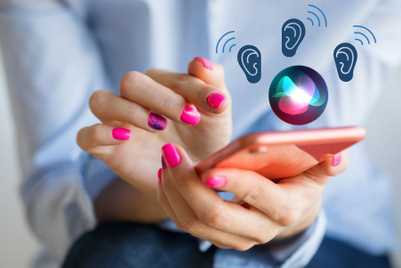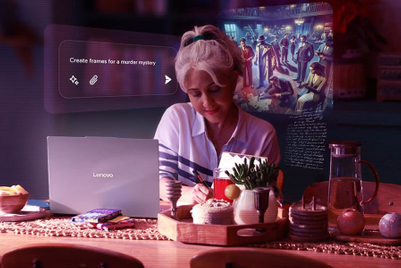Watching people speak to an invisible Siri, Alexa or Cortana no longer seems odd. We are, after all, in a relationship with our phones who now, come with a voice. These voices today are playing our music, turning appliances on/off, reading the morning news and telling us which is the fastest route to take to get to our date on time.
Voice enabled devices have transformed from simple text-to-speech enablers to complex devices that act as the digital personal assistant of today’s consumer, which can be used by consumers to directly ask questions from multiple brands at the same time. However, voice devices are also direct communication channels that are open 24x7, providing marketers access to one single user at a time. Here are some reasons why marketers must turn this communication channel into a two-way street:
Driven by user intent
Voice assistants have grown much faster than expected. In addition to this, different voice devices are used for predominantly different reasons. For example, Apple’s Siri and Amazon’s Alexa are both tech enabled voice bots, but Siri is largely used for generic internet searches, map directions, etc., possibly on the move, while Alexa would mostly remain in one environment (office, home, bedrooms) and be used for weather updates, daily newsfeed, playing music or even turning devices on or off. By tracking and analysing user intent i.e. what any user intends to do with a voice enabled device or a voice bot helps marketers understand how to create engaging campaigns that resonate with consumers, giving them several ideas on how a voice device can possibly be positioned in the market.
The era of conversational living – revolutionising SEO
The more consumers ‘talk’ to their devices, the more they are encircling an era of ‘conversational living’ – wherein consumers actively communicate with their devices by speaking to them, instead of the painful typing and the ever invasive auto-correct. A Google search for ‘shopping malls near me’ is quickly changing to ‘which shopping mall is the closest’, or ‘where is the nearest shopping mall’. Voice devices are changing the way consumers search for information, making them gravitate towards asking direct questions instead of statements asking for information. To ensure that marketers don’t miss out on voice search content, they must change the way they conduct SEO to include different keywords like ‘where’, ‘nearest’. This would further provide information about the kind of questions users ask when in a particular environment, which can help marketers place the right ad in the right place at the right time, and for the right consumer.
India’s disconnected mobile users
The growth of mobile connectivity and cheap data has connected a large section of India’s rural population to the internet, but the language barriers and lack of education acts as a huge barrier in their seamless interaction with their phones. Industry reports about the mobile marketing ecosystem have shown that by 2022, every 9/10 mobile users will be an Indian language speaker, showcasing the wide scope for voice enabled devices for the Indian population. The rise of multilingual voice apps, bots, etc. has made it considerably easier for rural audiences to fully interact with their mobile phones. Google’s Hindi voice search, for example, has helped a large number of rural consumers to be able to be a part of the mobile marketing ecosystem as consumers. In addition to this, voice technology is being used to teach children how to speak in multiple languages. Google’s Bolo App is aimed at teaching primary grade children how to read and talk in both English and Hindi by encouraging them to read out loud, and also provides instant feedback on their performance. As more language options get added into the dictionaries of voice devices, the number of new users will grow immensely in a lingually diverse country like India.
With greater personalisation comes greater brand loyalty
Today’s consumer values personalisation over everything and one size no longer fits all. How well an app or device ‘remembers’ a consumer’s behaviour is what drives brand loyalty. Voice devices are powered with various technologies – ML remembers the consumers behaviour with the device, IoT connects it with various other devices or appliances and AI keeps a track of all activities, searches, etc., and further analyses it to track and predict consumer habits. Marketers can access all this data about each consumer to help them achieve new heights of personalising user experience. It is possible for marketers to use voice devices to record or ‘remember’ the voice of each unique user, and then utilise that to record their search habits, purchase behaviour, and any other activity that the device may be used for. This data can help marketers find out which user is interacting with the device at what time, helping them enhance their user experience capabilities.
Voice is still in its nascent stage. But with marketers having access to volumes and volumes of unique consumer data from new, emerging target audiences, there is great scope for different kinds of voice marketing campaigns in the nearer future. It provides for a huge opportunity to connect with new target audiences in new and different methods that may not have been possible before due to barriers created by education, exposure, language and connectivity. Voice enabled devices have opened up a while new avenue of marketing, one that has already proven to be an opportunity-rich space, and is waiting to be explored in new ways.




.jpg&h=334&w=500&q=100&v=20250320&c=1)
.jpg&h=334&w=500&q=100&v=20250320&c=1)


.jpg&h=334&w=500&q=100&v=20250320&c=1)


.jpg&h=334&w=500&q=100&v=20250320&c=1)

.jpg&h=334&w=500&q=100&v=20250320&c=1)

.png&h=268&w=401&q=100&v=20250320&c=1)


.jpg&h=268&w=401&q=100&v=20250320&c=1)

.jpg&h=268&w=401&q=100&v=20250320&c=1)

